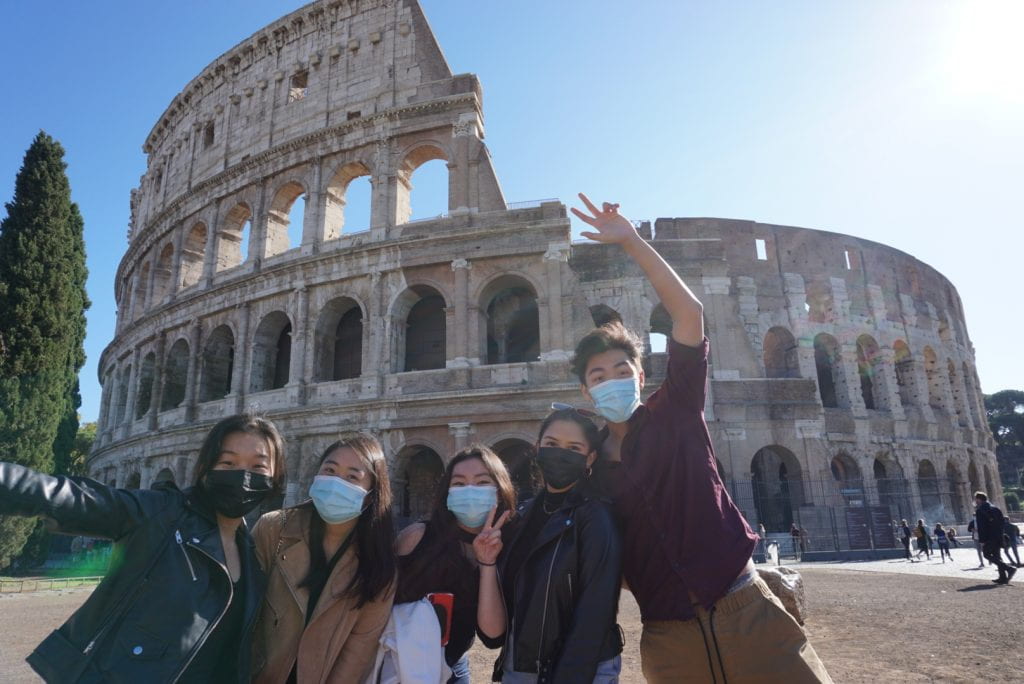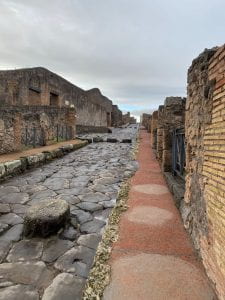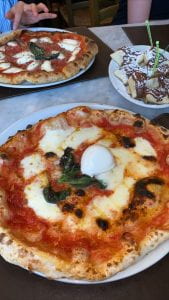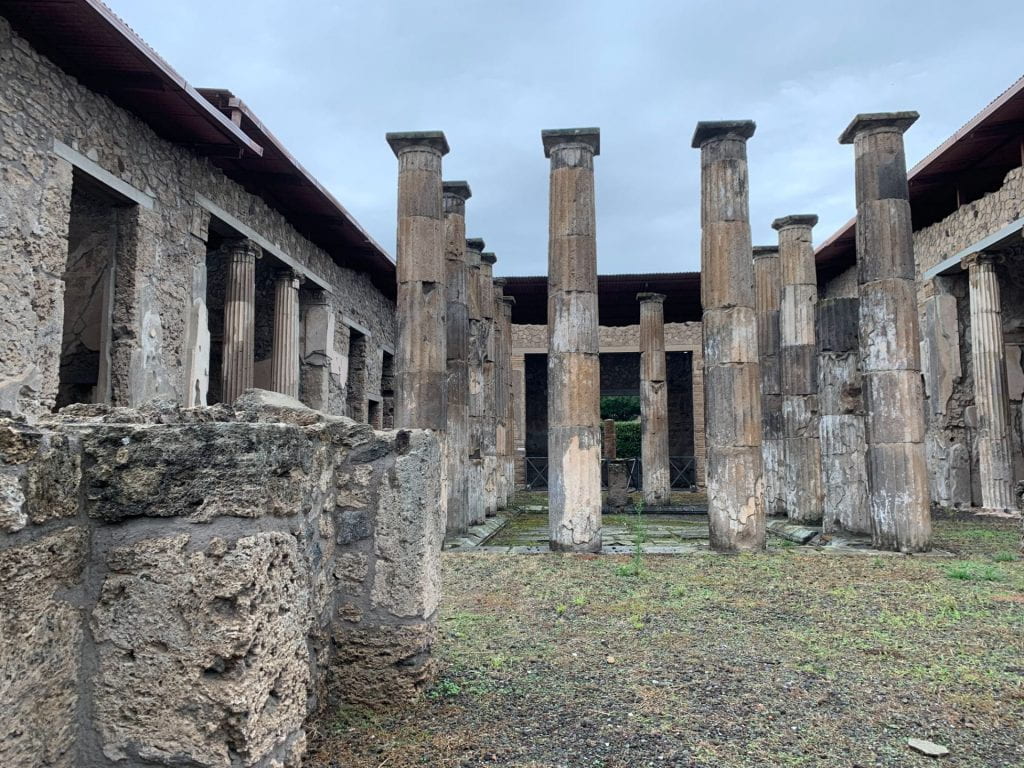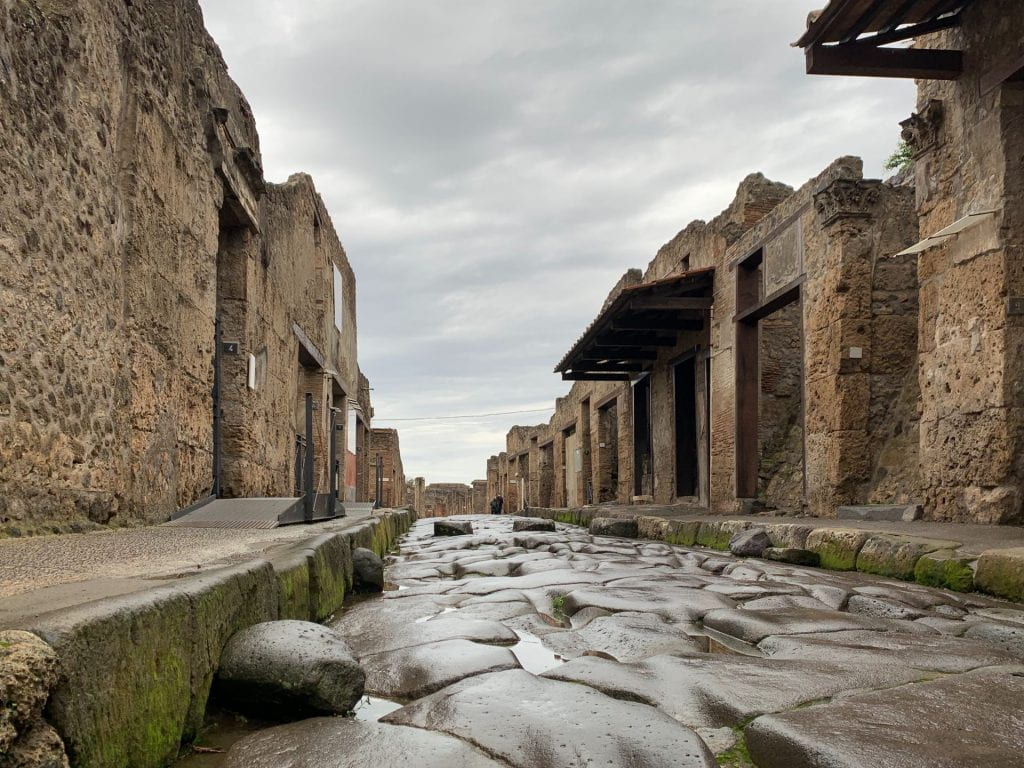Monday, November 16, 2020 | Written by Kaela
ROME, ITALY
Italy was everything I had ever dreamed of and more. When planning my trips before attending Georgia Tech-Lorraine, Rome was one of the cities I looked most forward to seeing, so we set aside more than enough days to enjoy this beautiful city as well as the Vatican.
DAY 1:
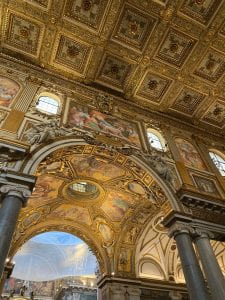
Since we arrived in Rome around midday, our itinerary was short. First, we headed to Basilica di Santa Maria Maggiore, one of Rome’s four major basilicas. From floor to ceiling, it is adorned with mosaics, illustrations, engravings, figures, and looks like the whole basilica was dipped in gold. Adornments filled every inch of the building. I could spend days admiring each and every detail, each one as beautifully crafted as the next. While at the beginning of my travels I spent time comparing all of the cathedrals, basilicas, and churches I have been fortunate enough to visit, I have come to realize they are all dazzling in their own ways – whether it be expansive displays of stained glass like the Cathédrale de Metz or the gilded details of the Basilica di Santa Maria Maggiore – and I simply cannot choose a favorite.
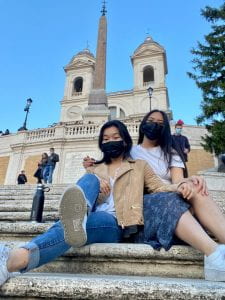 Our next stops were two famous tourist attractions: the Trevi Fountain and Spanish steps. One of the girls traveling with me had visited these locations before and showed us pictures she took which were filled with hordes of tourists taking their own snapshots. Without the typical swarm of people, we had the opportunity to view every angle of each of the attractions. As the sun set over the Spanish Steps, I couldn’t help but pinch myself to test I was really awake.
Our next stops were two famous tourist attractions: the Trevi Fountain and Spanish steps. One of the girls traveling with me had visited these locations before and showed us pictures she took which were filled with hordes of tourists taking their own snapshots. Without the typical swarm of people, we had the opportunity to view every angle of each of the attractions. As the sun set over the Spanish Steps, I couldn’t help but pinch myself to test I was really awake.
DAY 2:
We began our second day in Rome at Mercato Centrale Roma. The delicious smells of fresh herbs wafted through the air, leaving our mouths watering. We all wandered amongst the many vendors until I finally decided to purchase truffle pasta that was to die for.
After we all finished enjoying our plates of heaven, we headed straight to the Colosseum.
QUICK TIP: Travel with all sorts of different people. It opens your perspective and you will learn a lot along the way.
Our group turned out to be the perfect team at the Colosseum. We all had knowledge in different areas which we could share with one another: one girl studied Latin and could translate various Roman texts, another knew a lot about Roman history, another is really knowledgeable about art and I have some knowledge of architectural history. It was sort of like having my own personal guides while traveling through Italy. It is more enjoyable to do more than just “sightseeing” and actually learn about what you are looking at. Which leads to my second–
QUICK TIP: I recommend doing a little bit of research before you visit somewhere, and take the extra time to read all of the informational signs. This will make your experience so more valuable.
We then walked through the Roman Forum and enjoyed the view from Palatine Hill. I found myself imagining the area filled with people and what it must have looked like when it was first built. We then walked to the Pantheon, enjoying the great weather and strolling along the cobblestone streets. At the top of the
dome of the Pantheon is a 9 meter (~30 feet) hole. which serves as the church’s main source of light. At first I was confused, isn’t the point of a roof to keep out the rain? I learned that rain does come through it but the floor is slightly sloped and has well
hidden drainage holes, which only left me even more in awe of the Pantheon than when staring at the 30 ft hole above my head.
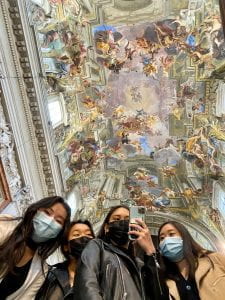 We stopped for dinner nearby for a cheap four course meal at Taverna del Seminario. After having a tiramisu once or twice a day everyday while in Italy, I now consider myself a pseudo tiramisu aficionado. My rating is that the one from Taverna del Seminario was by far the best. In major cities, with the pandemic, many businesses close early, so we’ve gotten in the habit of heading back early to wherever we are staying to catch up on schoolwork. On the way to our airbnb, we stopped at Chiesa di Sant’Ignazio di Loyola and a couple souvenir shops, making the perfect end to a perfect day.
We stopped for dinner nearby for a cheap four course meal at Taverna del Seminario. After having a tiramisu once or twice a day everyday while in Italy, I now consider myself a pseudo tiramisu aficionado. My rating is that the one from Taverna del Seminario was by far the best. In major cities, with the pandemic, many businesses close early, so we’ve gotten in the habit of heading back early to wherever we are staying to catch up on schoolwork. On the way to our airbnb, we stopped at Chiesa di Sant’Ignazio di Loyola and a couple souvenir shops, making the perfect end to a perfect day.

